For quite a few years I have tried out many devices for smart homes and lived with them to figure out what works most consistently. For myself, there is also a need for things to share information and allow for automatons that use complex logic. An example of this is that while I do want my lights to turn on when I get home, I only want them to do so if it is dark outside and at a brightness that reflects the time of day that I am getting home. This kind of automation requires many devices to share information across my network, but some devices make that process easier than others. With that in mind, here are my recommendations on smart home devices that play nice with each other.
As a personal preference, I like to use devices that do not require access to the internet but will work on your local home network. The reasons for this have to do with security and limiting the amount of outgoing internet traffic. Basically, if you are in your home, you should not have to connect to the internet to control devices that you are sitting right next to. In fact a perfect smart home system should only have one device that actually connects to the internet and that would be your Smart Home Hub. We are not quite there yet, but that is the direction things are moving in.
Smart Lights
Within any smart home lights by far have the most controllable options and are probably the most noticeable of all. You have many choices between white temperatures, full color, form factor, animations, and even light spectrum capabilities. While Hue were among the first to market smart lights they are not my first pick.
Lifx
These are hands down the best smart lights I have ever used. They are very bright, do not require a hub, and do not need to be connected to the cloud. There are many options for these lights but these are the ones I use the most.
800-A19, Adjustable White
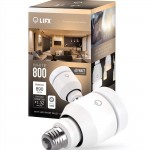 This was actually the first light that I purchased after testing a few back in 2016. They were easily 3 times brighter than Hue lights that I had used before and they worked did not require outside internet access. These lights only operate as a dim-able white light, but the range is amazing and you can change the white spectrum from cool to warm. This is very good for combating seasonal depression as the cool white setting simulates natural sunlight. They retail for $46 and that is not bad for what you get compared to other LED lights.
This was actually the first light that I purchased after testing a few back in 2016. They were easily 3 times brighter than Hue lights that I had used before and they worked did not require outside internet access. These lights only operate as a dim-able white light, but the range is amazing and you can change the white spectrum from cool to warm. This is very good for combating seasonal depression as the cool white setting simulates natural sunlight. They retail for $46 and that is not bad for what you get compared to other LED lights.
LIFX Mini , Multicolored
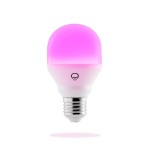 When I got the 800-A19 I also got the full color version and though it was supper bright and colorful, it was expensive and had some connectivity issues. This version of that light is not quite as bright, but significantly cheaper and none of the connectivity issues. The colors are very beautiful and and it is bright enough to light up a room so it is not just an accent light. I use these lights to set the mood during party mode, but also for my sunrise wake up automation. At $30 it is hands down the best color smart light on the market.
When I got the 800-A19 I also got the full color version and though it was supper bright and colorful, it was expensive and had some connectivity issues. This version of that light is not quite as bright, but significantly cheaper and none of the connectivity issues. The colors are very beautiful and and it is bright enough to light up a room so it is not just an accent light. I use these lights to set the mood during party mode, but also for my sunrise wake up automation. At $30 it is hands down the best color smart light on the market.
LIFX Mini, White 800
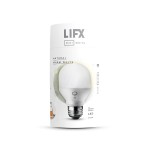 This is the newer version of the 800-A19 but it is locked to just warm white. It has a nice dimming range though and puts out 800 luminous so it is like a 60w bulb and about the size of a standard light bulb. The price point is not bad and this one is good for all those lights that are intended to fill in the room. Unless you really have a need for cool white lighting, I recommend these over the 800-A19 due to the $25 price.
This is the newer version of the 800-A19 but it is locked to just warm white. It has a nice dimming range though and puts out 800 luminous so it is like a 60w bulb and about the size of a standard light bulb. The price point is not bad and this one is good for all those lights that are intended to fill in the room. Unless you really have a need for cool white lighting, I recommend these over the 800-A19 due to the $25 price.
NanoLeaf
 The Nanoleaf Aurora is a bit spendy and can be a hassle to setup at first, but man are they cool when it is going. The animations are rather good but you will want to get the kit with the Rhythm sound triggered sensor to make it do the cool stuff. Like all of my recommendations, this will work without an API and it even has rather good support for Home Assistant. You can make more complex animations or scenes using the mobile app and then access them via the Home Assistant UI. I have something like this in my living room that is tied to party mode.
The Nanoleaf Aurora is a bit spendy and can be a hassle to setup at first, but man are they cool when it is going. The animations are rather good but you will want to get the kit with the Rhythm sound triggered sensor to make it do the cool stuff. Like all of my recommendations, this will work without an API and it even has rather good support for Home Assistant. You can make more complex animations or scenes using the mobile app and then access them via the Home Assistant UI. I have something like this in my living room that is tied to party mode.
Other Stuff:
As you may see, there are many more options for lighting than any other thing when it comes to smart homes. There are many other types of devices but usually you just need the same thing for each implementation. Like if you need to turn the power on or off for an older device, the same kind of switch will probably work. That said, here is a list of things that I have found work very well in a smart home.
WeMo Switches
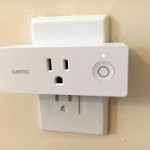 I never was a fan of WeMo due to the size and internet requirements, but their new versions work very well. They are also much slimmer so that you can plug more things in next to them. The setup is supper easy and they even auto detect with Home Assistant. While I do not actually have any in my home, I have used them quite a bit and they have fixed a lot of the things I used to hate about them. In fact they are the only kind of smart outlet I recommend unless you know how to re-program a Sonoff switch.
I never was a fan of WeMo due to the size and internet requirements, but their new versions work very well. They are also much slimmer so that you can plug more things in next to them. The setup is supper easy and they even auto detect with Home Assistant. While I do not actually have any in my home, I have used them quite a bit and they have fixed a lot of the things I used to hate about them. In fact they are the only kind of smart outlet I recommend unless you know how to re-program a Sonoff switch.
Voice Control
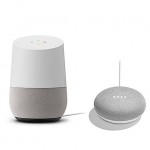 Home. I have tried them both and Google Home stands out In the world of voice activated assistants there is really only Alexa and Google for some very significant reasons. Each of these devices work well to give commands to other things in your smart home, but Google Home also lets you push content and data to it. As an example, I can not have a button that lets me change the volume of my Echo. For Alexa, you have to use the app for control over the Echo device itself. A Google Home device pops up in Home Assistant as a fully fledged media device. This also means that I can control volume, status, what’s playing, and even target a device using automatons without using the official app. Where these really shine is using voice triggers to run scripts from Home Assistant. To do this easily, and securely, your do have to pay $5 per month for the HASSio cloud service, but man is it worth it. I rarely ever have to set routines up from my phone app and all changes are made to the scripts that are connected from my Home Assistant server to Google Home. No more fooling around with apps, I just say “Hey Google, I’m home” and things start to happen. If I want to watch Star Trek TNG all I do is say “Hey Google, play TNG from Netflix on the TV.” because Google Home can control Chromecast!!! On it’s own, Google Home will do a lot, but with a server like Home Assistant the options are limitless. This is the one device, other than my HASSio server, that I allow to connect to the internet and I have one in each room.
Home. I have tried them both and Google Home stands out In the world of voice activated assistants there is really only Alexa and Google for some very significant reasons. Each of these devices work well to give commands to other things in your smart home, but Google Home also lets you push content and data to it. As an example, I can not have a button that lets me change the volume of my Echo. For Alexa, you have to use the app for control over the Echo device itself. A Google Home device pops up in Home Assistant as a fully fledged media device. This also means that I can control volume, status, what’s playing, and even target a device using automatons without using the official app. Where these really shine is using voice triggers to run scripts from Home Assistant. To do this easily, and securely, your do have to pay $5 per month for the HASSio cloud service, but man is it worth it. I rarely ever have to set routines up from my phone app and all changes are made to the scripts that are connected from my Home Assistant server to Google Home. No more fooling around with apps, I just say “Hey Google, I’m home” and things start to happen. If I want to watch Star Trek TNG all I do is say “Hey Google, play TNG from Netflix on the TV.” because Google Home can control Chromecast!!! On it’s own, Google Home will do a lot, but with a server like Home Assistant the options are limitless. This is the one device, other than my HASSio server, that I allow to connect to the internet and I have one in each room.
https://store.google.com/product/google_home_mini
Media Casting
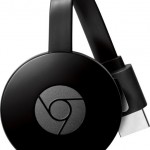 For this one I have to give it up for Chromecast. It is supper easy to use, works with all of my devices and supports all of the streaming media I use, except Amazon Video. If I want to show off some photos from my phone, easy screen cast. Who needs cable when I have unlimited on demand everything and no commercials for the same price. I do also have a Roku but that is really just for viewing Amazon Prime content on the TV.
For this one I have to give it up for Chromecast. It is supper easy to use, works with all of my devices and supports all of the streaming media I use, except Amazon Video. If I want to show off some photos from my phone, easy screen cast. Who needs cable when I have unlimited on demand everything and no commercials for the same price. I do also have a Roku but that is really just for viewing Amazon Prime content on the TV.
https://store.google.com/product/chromecast
Plex
 For those of you looking to stop sorting through your DVD library, Plex is a media server that you can set up on any computer. It supports an amazing amounts of file types and the UI is beautiful. When setup, you can access all of your media locally from any web browser. I did pay the $5 to get the app for my phone and tablet, but they are so worth it for use as a remote. You do have to pick and start the movie from Plex, but then Chromecast can take it over and handle the rest.
For those of you looking to stop sorting through your DVD library, Plex is a media server that you can set up on any computer. It supports an amazing amounts of file types and the UI is beautiful. When setup, you can access all of your media locally from any web browser. I did pay the $5 to get the app for my phone and tablet, but they are so worth it for use as a remote. You do have to pick and start the movie from Plex, but then Chromecast can take it over and handle the rest.
https://www.plex.tv/apps-devices/#servers
IOT Remote
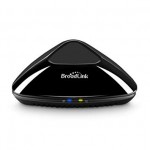 This is what is commonly known as an IR Blaster and it is used to send signals to anything that uses an IR remote control. I use the Broadlink rmPro+ for controlling my living room TV and surround sound to handle turning on an off. It can be a bit difficult to set up, but it works with Home assistant and that means I can include it in my automatons. The tricky thing about this type of device and automation is that most TVs use the same code for turning them on and off. This makes it impossible to detect the currant state of the TV. This is where plugin a Cromecast into my TV can help. Since the Chromcast dongle is powered by the TV, it will only pop up on my Home Assistant server when the TV is on. Otherwise Chromecast is listed as Unavailable when the TV is off. So I just have a script that looks to see the state of Chormcast and only turns the TV on if it is off or off when it is on and nothing if the TV is already at the target state. Anyway, none of this would be possible without this IR Blaster.
This is what is commonly known as an IR Blaster and it is used to send signals to anything that uses an IR remote control. I use the Broadlink rmPro+ for controlling my living room TV and surround sound to handle turning on an off. It can be a bit difficult to set up, but it works with Home assistant and that means I can include it in my automatons. The tricky thing about this type of device and automation is that most TVs use the same code for turning them on and off. This makes it impossible to detect the currant state of the TV. This is where plugin a Cromecast into my TV can help. Since the Chromcast dongle is powered by the TV, it will only pop up on my Home Assistant server when the TV is on. Otherwise Chromecast is listed as Unavailable when the TV is off. So I just have a script that looks to see the state of Chormcast and only turns the TV on if it is off or off when it is on and nothing if the TV is already at the target state. Anyway, none of this would be possible without this IR Blaster.


